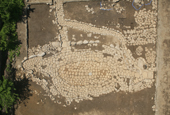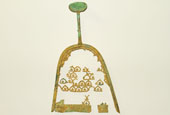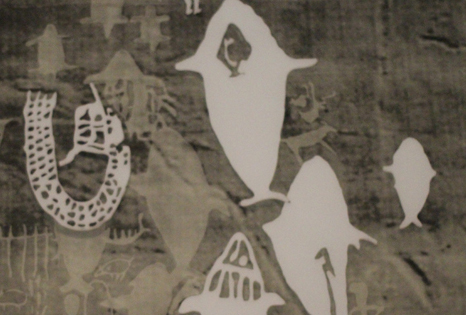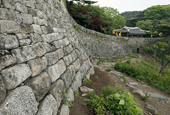-
 Korea.net's 24-hour YouTube channel
Korea.net's 24-hour YouTube channel- NEWS FOCUS
- ABOUT KOREA
- EVENTS
- RESOURCES
- GOVERNMENT
- ABOUT US
Some 15,000 archeological artifacts from the Upper Paleolithic Age (c. 40,000 B.C.-c. 10,000 B.C.) have been recently unearthed during excavation work around the Namhangang River in Danyang County, Chungcheongbuk-do (North Chungcheong Province).
The historical investigation has been specifically carried out at the Suyanggae Site, a limestone area where historical excavations often occur. Scientists discovered a wide range of stoneware, including a core, a micro-blade core, a blade core, a flake tool and a stone hammer. The charcoal from the second occupation layer, where the stoneware was found, tells us that the newly found relics were produced approximately 18,000 years ago.
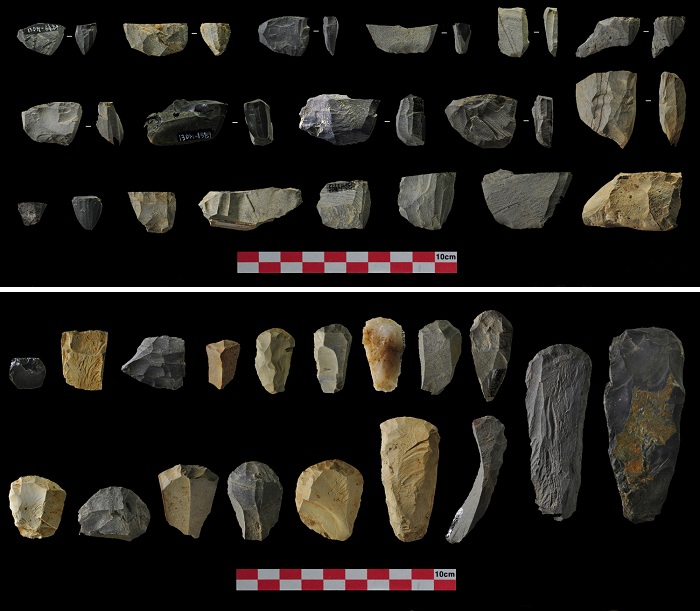
Three different Upper Paleolithic occupation layers were found in the region. Each layer has slightly different kinds of stone hammers, in various shapes and sizes, and a matching set of cores, flake tools and stone pieces. Archeologists tell us that the production of stoneware was centered in this region.
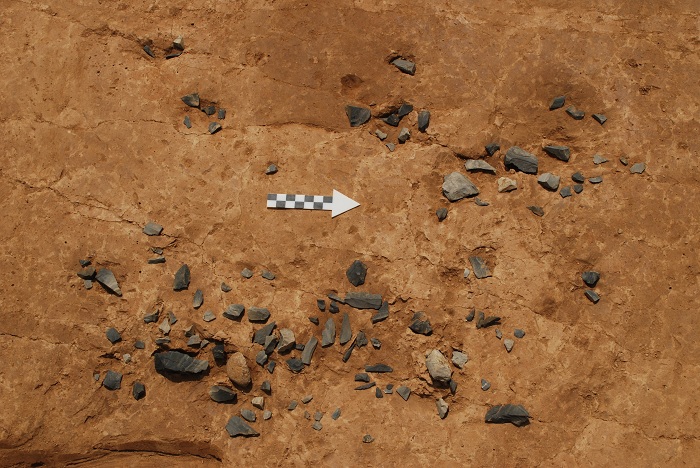
The buried soil horizon associated with the third occupation layer, the lowest level, had one particularly intriguing piece of stoneware: an elongated stone with clearly man-made markings. It is 20.6 centimeters long, 8.1 centimeters wide and 4.2 centimeters thick, with 22 graduated markings along the side.
According to the Cultural Heritage Administration (CHA), the government body leading the dig, these types of relics haven't been found anywhere else in East Asia and are considered to be important and epoch-marking artifacts that could lead to a new understanding of humanity's early prehistory.
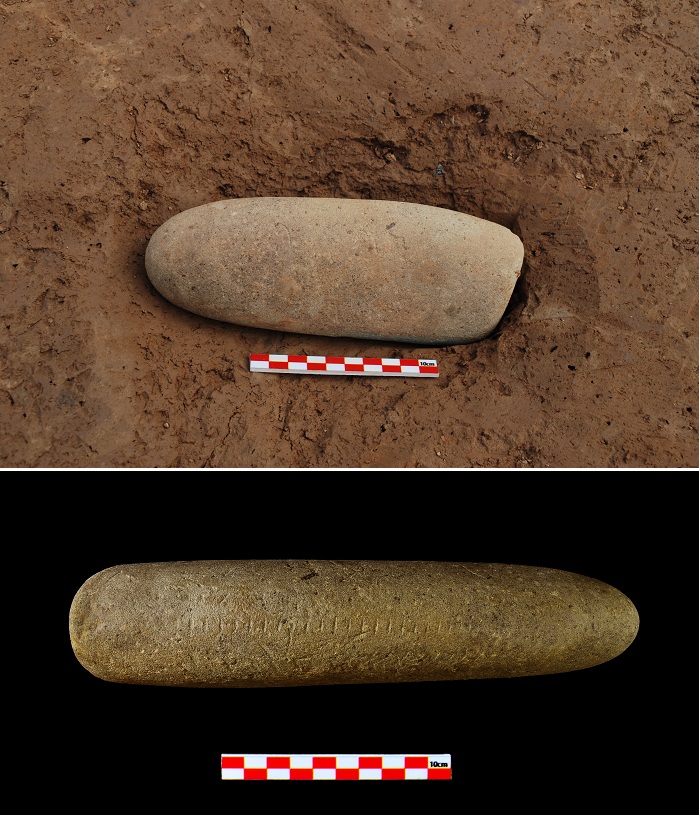
The newly unearthed stoneware with scaled markings leads some researchers toward the theory that people of the Paleolithic Age had a concept of numerals, such as numbers and units. This theory still needs further in-depth study and research by archeologists and historians.
By Wi Tack-whan, Lee Seung-ah
Korea.net Staff Writers
slee27@korea.kr
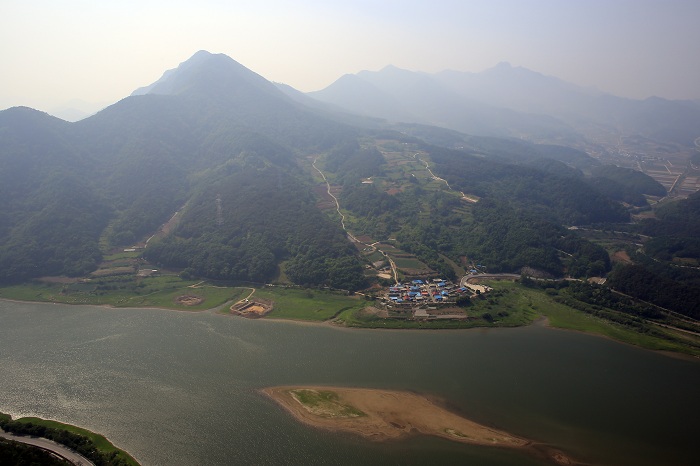
The historical investigation has been specifically carried out at the Suyanggae Site, a limestone area where historical excavations often occur. Scientists discovered a wide range of stoneware, including a core, a micro-blade core, a blade core, a flake tool and a stone hammer. The charcoal from the second occupation layer, where the stoneware was found, tells us that the newly found relics were produced approximately 18,000 years ago.

Stoneware in various sizes and shapes is unearthed at the Suyanggae Site in Danyang, North Chungcheong Province. (photos courtesy of the CHA)
Three different Upper Paleolithic occupation layers were found in the region. Each layer has slightly different kinds of stone hammers, in various shapes and sizes, and a matching set of cores, flake tools and stone pieces. Archeologists tell us that the production of stoneware was centered in this region.

The third occupation layer (photo courtesy of the CHA)
The buried soil horizon associated with the third occupation layer, the lowest level, had one particularly intriguing piece of stoneware: an elongated stone with clearly man-made markings. It is 20.6 centimeters long, 8.1 centimeters wide and 4.2 centimeters thick, with 22 graduated markings along the side.
According to the Cultural Heritage Administration (CHA), the government body leading the dig, these types of relics haven't been found anywhere else in East Asia and are considered to be important and epoch-marking artifacts that could lead to a new understanding of humanity's early prehistory.

Stoneware with graduated markings, newly found at the Suyanggae Site, raises questions among archaeologists about humanity's prehistory. (photo courtesy of CHA)
The newly unearthed stoneware with scaled markings leads some researchers toward the theory that people of the Paleolithic Age had a concept of numerals, such as numbers and units. This theory still needs further in-depth study and research by archeologists and historians.
By Wi Tack-whan, Lee Seung-ah
Korea.net Staff Writers
slee27@korea.kr

Pictured is the Suyanggae Site where excavation work often occurs. (photo courtesy of the CHA)
Related Contents
Most popular
- First hearing-impaired K-pop act hopes for 'barrier-free world'
- Expats could account for 7% of population in 20 years: report
- 'Mad Max' director impressed by 'cinema-literate' Korean viewers
- Show in Italy to present 'thought-filled' Korean craftworks
- Romanian presidential couple visits national cemetery









